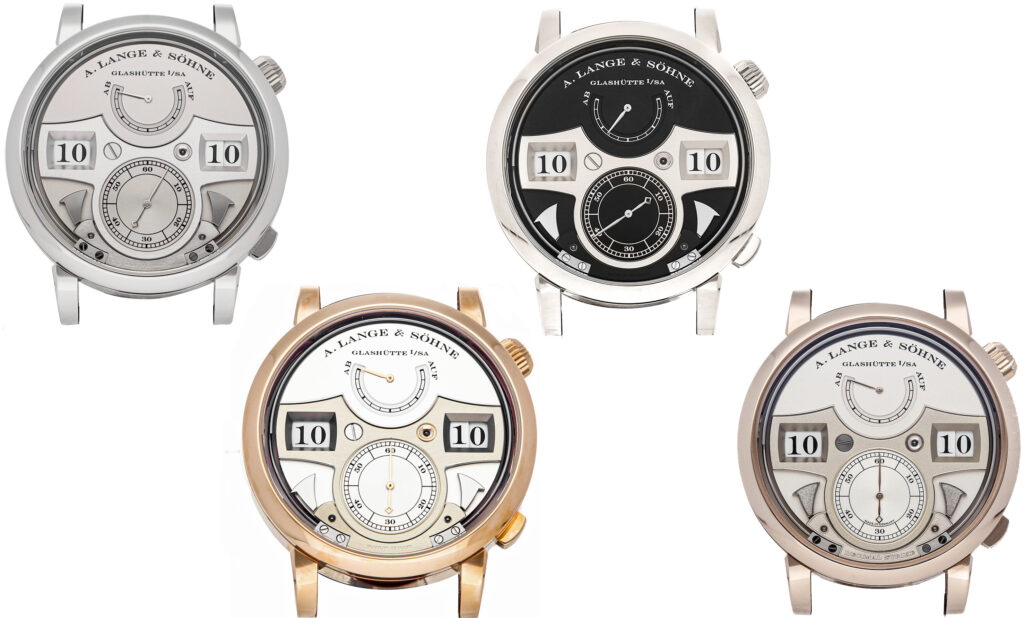
The iconic assortment in each metal available
A. Lange & Söhne Zeitwerk Striking Time
May 2020. Updated in April 2024.
Designing a product family is an extremely demanding vocation. The designer has to make sure that the watch is going to deliver the pleasing aesthetics and intended character both in basic as well as complicated versions. Zeitwerk in this regard is an exemplary creation. Although almost no one got it; the brand was apparently giving hints of the upcoming chiming complications (the gong-shaped space next to seconds sub-dial) with the introduction of the first Zeitwerk in 2009 (read more about the birth of Zeitwerk, here).
Two years after the first edition and exceptional Lumen edition in between; A. Lange & Söhne launched their first chiming watch in 2011. As you might be familiar with chiming complications, they are mostly found in classical dress watches and many were expecting from Lange to follow the tradition as well. But; Lange being Lange, their first chiming model arrived in the most unexpected family: Zeitwerk Striking Time. For the first time in any Lange watch, you cannot only see; but also hear the passage of time.
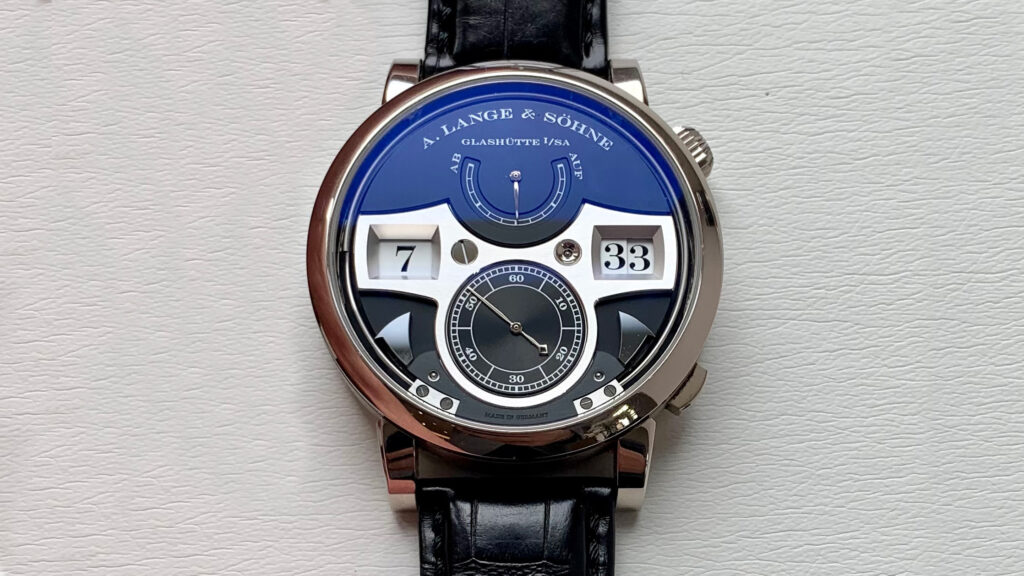
Zeitwerk Striking Time is neither a Sonnerie nor a repeater; however, certainly a respectable achievement as it is a combination of such an important mid-complication with the ingenious and already exceptionally demanding Zeitwerk. And above all, it symbolizes a manufacture’s relentless chase for constant development and I consider myself lucky to witness such an era.
The Zeitwerk Striking Time measures 44.2 mm in diameter and 13.6 mm in thickness. The extra 2.3 mm is needed due to the striking mechanism’s implementation in the design. The case structure as well as finishing stays true to the original version. We have the signature three-step case construction with alternate finish, and the crown at 2 o’clock. In addition, the Zeitwerk Striking Time features a “silence” pusher at 4 o’clock, in case you’d like to disengage the striking mechanism.
On the wrist, as you can expect from a Lange watch, especially of this size; it is hefty, heavy and present. Thanks to its further curved lugs, it hugs the wrist quite well, prevents the wobbling and I would say feels close to the basic Zeitwerk model. The lack of “protruding” caseback greatly helps the balance on the wrist.
Coming to the dial side; Zeitwerk Striking Time preserves the defining symmetry of the collection tremendously – with a lot more going on.
From the finish to angles given to hammers and time bridge as well as the screws’ locations to the smallest of details, everything on the Zeitwerk Striking Time’s dial seamlessly blend each other; resulting in a timeless harmony.
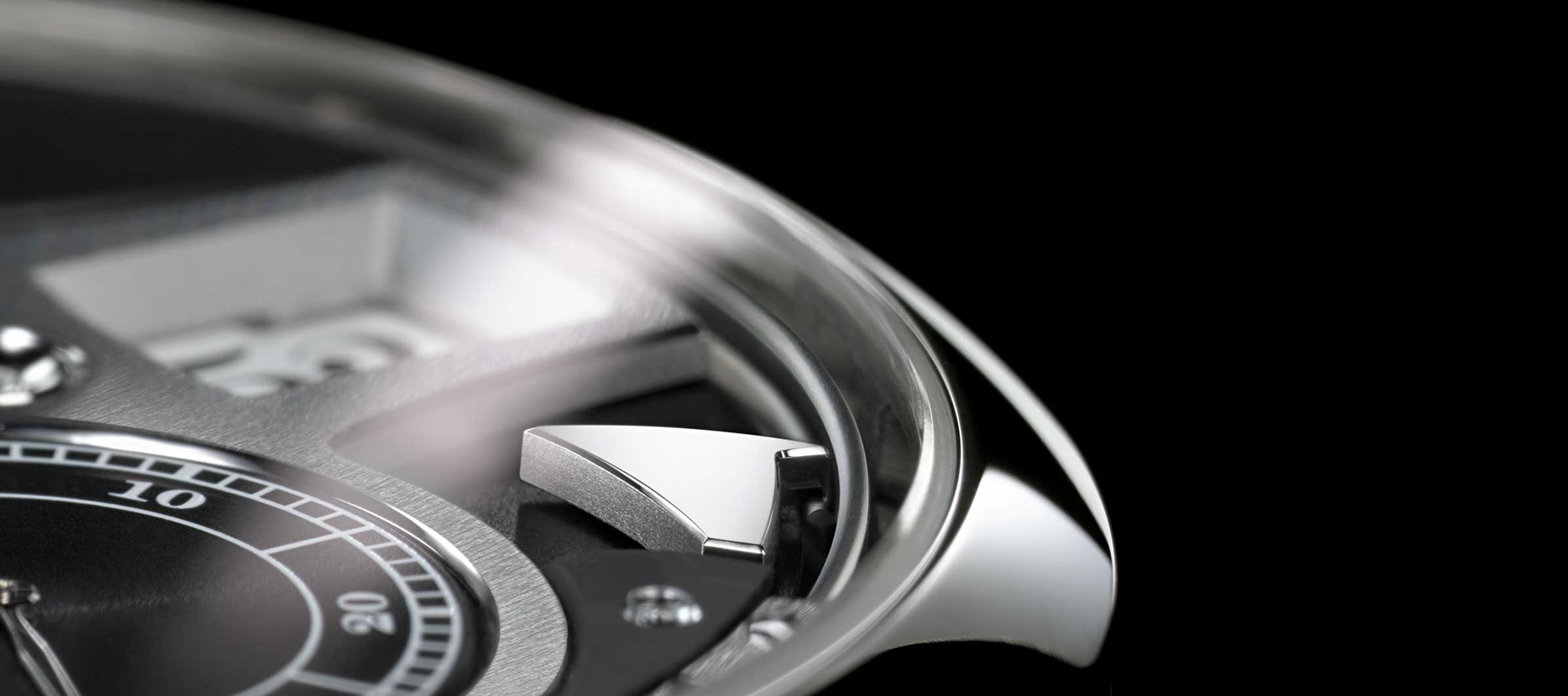
Steel hammer, hitting the steel gong. Courtesy of Lange Uhren GmbH
The hammers implementation to overall design is flawless. They reside in their similarly shaped cut-outs and fit in naturally. Steel hammers are gracefully black polished on top and beautifully chamfered by hand. At certain angles, they appear half black – half grey, showcasing an irresistible result of the technique. The German Silver time bridge surrounding brightened hammers is brushed, putting more emphasis on the exceptional craftsmanship.
The hammer on the right strikes with a high-tone for every 15 minutes whereas the left chimes with a low-tone for hours. What is exceptional to observe on the dial is the visible pre-cocking of the hammers. With every remontoir discharge happening each minute, like a living thing, you can observe the right hammer receives more tension and moves upwards to delight the ears and eyes once again. Staggering.
On the back, Zeitwerk Striking Time exhibits its soul; the caliber L043.2 – the second iteration of the basic movement found in Zeitwerk. Since the striking mechanism takes place on the dial side, from the back, the caliber L043.2 is identical to the basic version. It offers the same 36 hours of power reserve.
As we already went through the movement’s working principle in the Zeitwerk article; below, the focus is on the striking mechanism of the caliber.
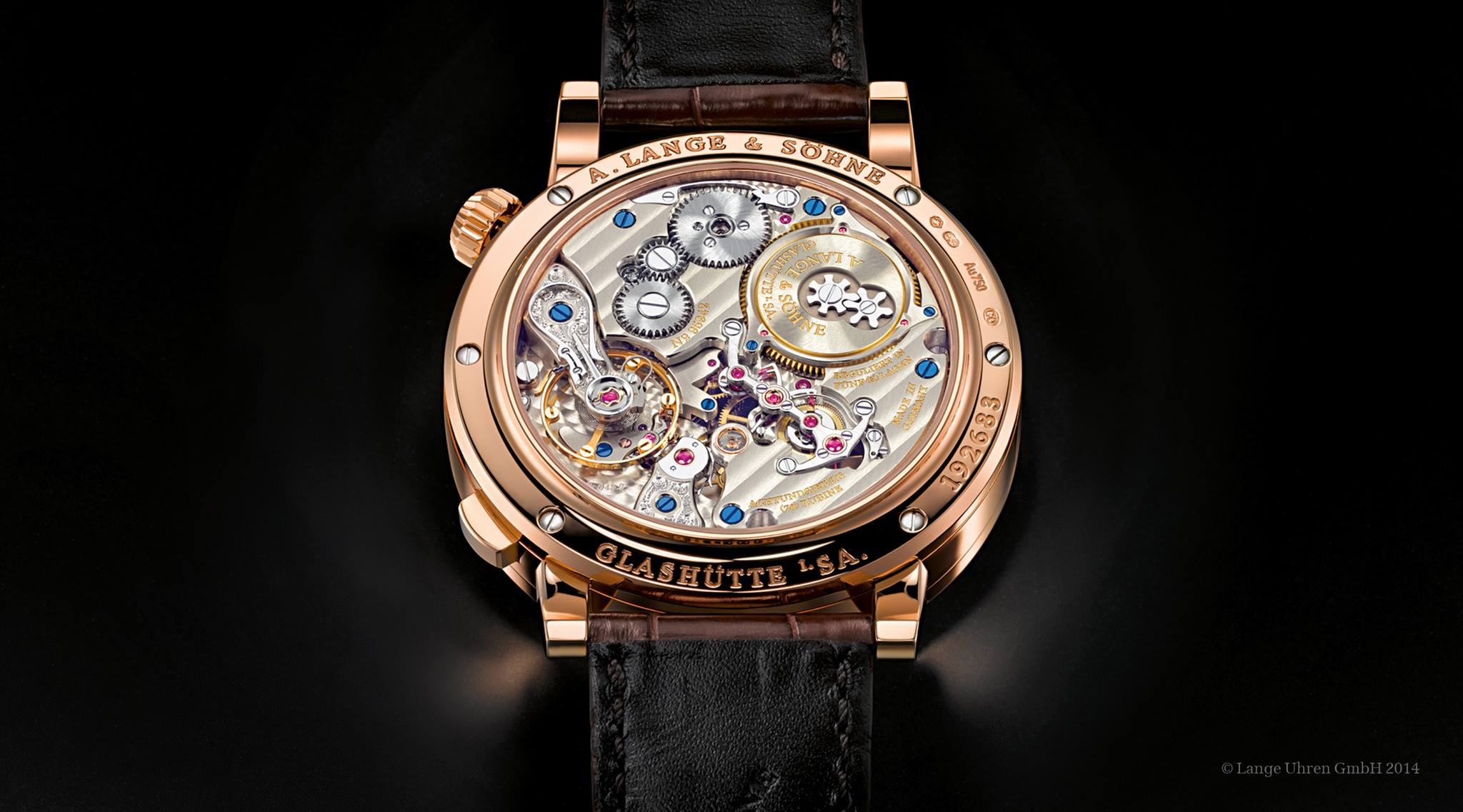
Caliber L043.2 of the Zeitwerk Striking Time. Courtesy of Lange Uhren GmbH
Repeaters and Sonnerie mechanisms are known to be the most demanding complications to assemble and craft for centuries. They are the Mount Everest of horological competence, and only the most accomplished manufactures – watchmakers can bring life to such marvels. Although not a repeater or a sonnerie, Zeitwerk Striking Time’s caliber L043.2 is extremely important for one simple reason: It is an exquisite example of engineering in energy arrangement. The discs make 1608 perfectly timed jumps a day, and on top, the movement now feeds the steel hammers. However, this watch still runs within the time keeping standards (it is more strict than COSC) of Lange…
Zeitwerk overall is an incredible wristwatch concept, and the Striking Time surely takes it to the next level. Now, let’s have a look at how does this marvel work.
The Striking Mechanism
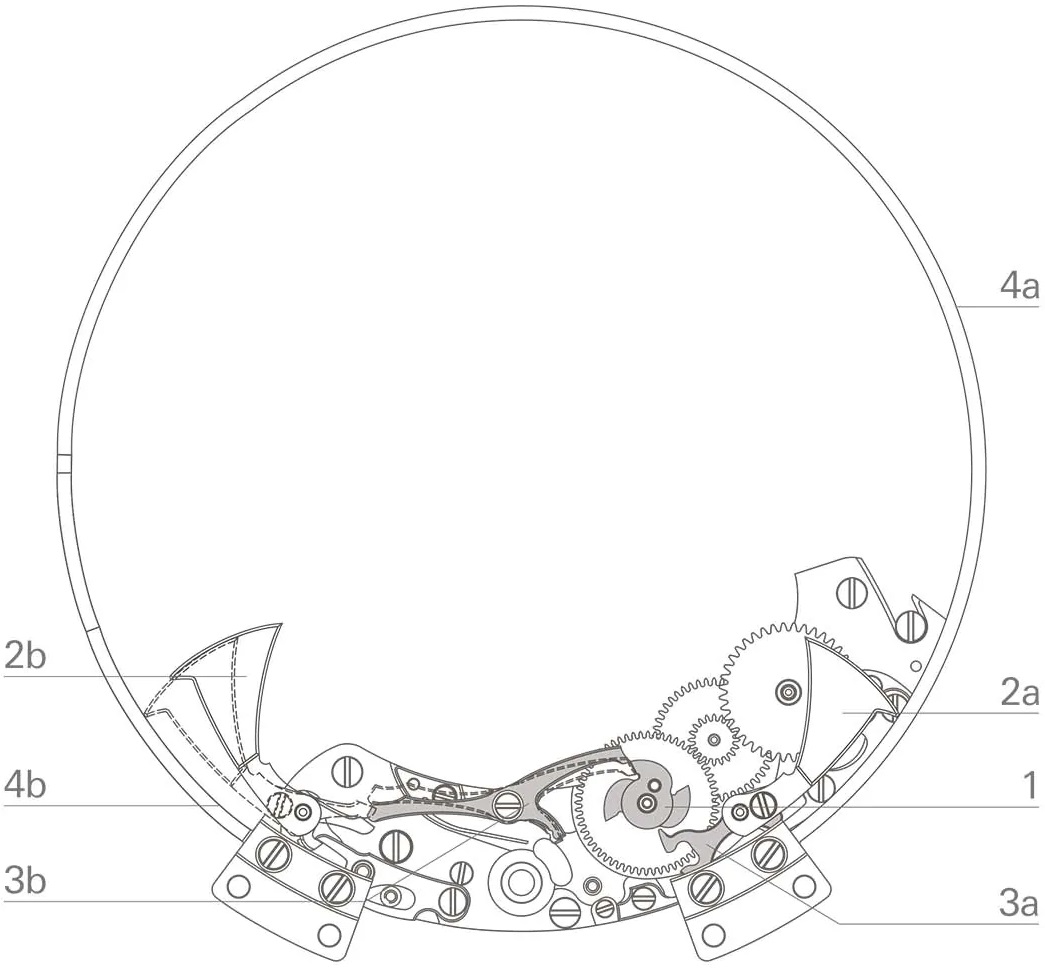
The diagram above is the reason why the Zeitwerk Striking Time’s caliber has 113 more parts compared to the basic version; 528 in total. The explanation comes from A. Lange & Söhne:
“The striking mechanism of the watch is activated by a three-pronged snail (1). The three prongs control the mechanism of the quarter-hour hammer (2a) on the right-hand side. Below it lies a fourth prong for the hour hammer (2b) on the left-hand side. Powered by the switching impulses of the jumping numerals mechanism, the snail rotates about its own axis by 60 small steps in the course of an hour. During this phase, one of the four prongs deflects its hammer via a lever (3a, 3b), thus tensioning its respective spring. Precisely every quarter-hour and hour, the respective lever crosses over the apex of its prong and allows the spring to trip the hammer against its gong (4a, 4b).”
Following the Striking Time, A. Lange & Söhne launched the Zeitwerk Decimal Strike in honey gold in 2017, with a limitation of 100.
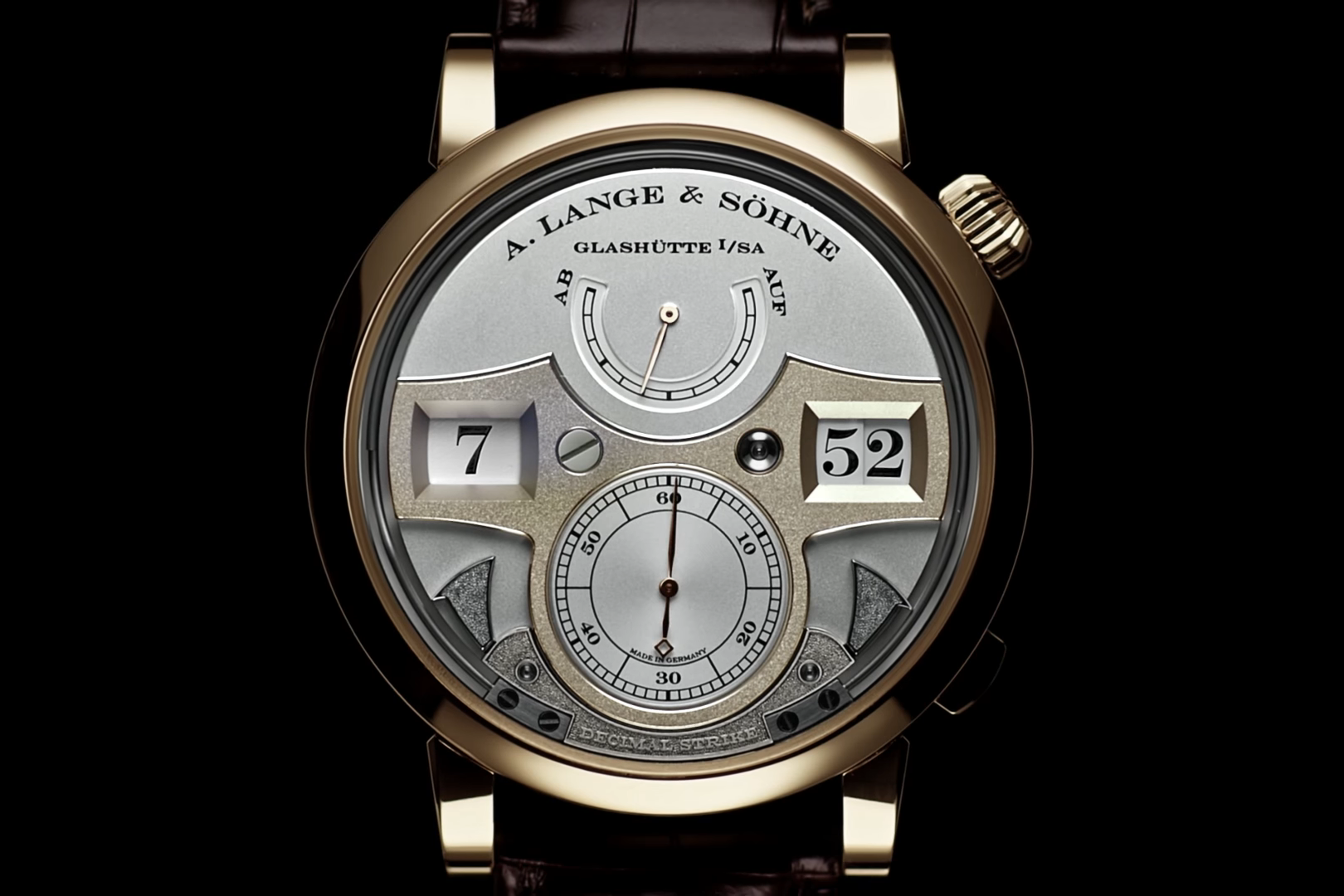
The only technical difference between the Striking Time and the Decimal Strike is the number of prongs (nr.1 in the diagram above) in the snail. Whereas the former has three prongs for 15-30-45 minutes, the latter has five prongs thus chimes at decimal sections. Furthermore, the Decimal Strike’s caliber L043.7 carries an engraved escape wheel cock, in addition to the usual balance cock. The dial side however, is another story. It is Handwerkskunst(ish).
The case is made of honey gold, proprietary alloy of the brand, which was first seen in 2010 with the festivities of the 165th (I know it does not make sense) birth year of the brand. The material is much harder than other gold alloys, and has a distinct hue that is somewhere between pink and yellow gold.
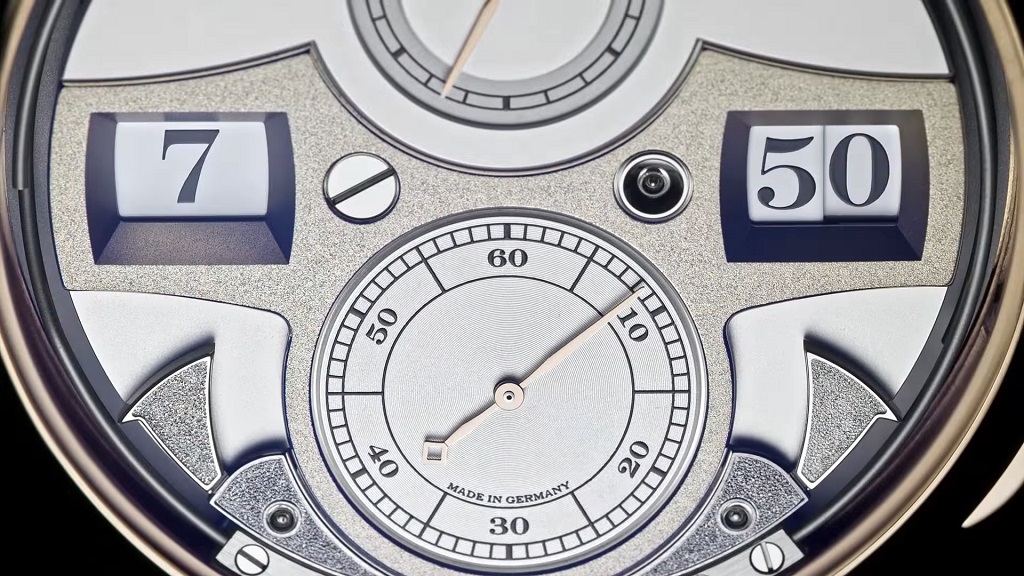
Courtesy of Lange Uhren GmbH
In the standard Zeitwerk models, the time as well as the hammer bridge is brushed, and the hammers are black polished. Decimal Strike however, is much more ornate. Usually reserved for Handwerkskunst collection pieces, the hammer system is thoroughly finished with the tremblagé engraving technique. Resulting in a grainy and frosted look, the technique is applied with a fine, chiseled burin carving into different directions with equal pressure to achieve a complete random and three dimensional appearance. This technique is present on the hammers and hammer bridge; whereas the time bridge is machine frosted.
I like what A. Lange & Söhne did here; because it is not just dressing the watch with a different color and calling it a limited edition – which they have done many times. Instead, they added a real value to the piece both with case material as well as the overall appearance. This helps to distinctly differentiate the Zeitwerk Decimal Strike from its standard correspondents; thus, deservedly carries the “special edition” title.
Update December 2022: The Zeitwerk Striking Time is discontinued. This is possibly to open up the production line for the new Zeitwerk models with updated calibers, as well as to focus on the production of repeaters.
Zeitwerk Striking Time Concluding Thoughts
When introduced in 2011, the Zeitwerk collection, despite numerous exceptional special editions such as Lumen, Handwerkskunst, was still immature and this reflects in pricing. The Zeitwerk Striking Time was $90k in gold, and $110k in 100 pieces limited platinum. Not bad for a watch with such unique approach and simply with no alternatives in the whole watchmaking scape.
Over the years however, the retail price started to skyrocket, and in 2023, the gold versions’ MSRP are around $140k. Such increase in the MSRP (percentage wise) we see that it has affected the pre-owned market. As I recall, one could purchase a gold variant around $70s a few years back, whereas today we see that the price has clinched safely above $100k (for black dial Zeitwerk Striking Time).
Still, I’d say that compared to the official price, this gem is an incredible bargain – just like many other complicated Lange pieces. It is a living watch, reminding you that it is there every 60 seconds with its strong jump, and each quarter with its melody. Uncanny.
For the future, I expect a revised movement but not much change on the design. Perhaps an arrangement of the gongs too.
Thank you.
I hope this was a valuable guide for whomever is looking for a Zeitwerk Striking Time or just want to learn the details and history of these pieces. If you’d like to chat, sell or buy a Zeitwerk, please kindly reach out to me via [email protected]
Please feel free to contact:
Follow Langepedia on Instagram:
Watch “A. Lange Story” Documentary, in partnership with WatchBox:
FAMILIES / COMPLICATIONS
STAY IN TOUCH
Sign up for the newsletter to get to know first about rare pieces at Marketplace and in-depth articles added to the encyclopedia, for you to make the most informed choice, and first access!